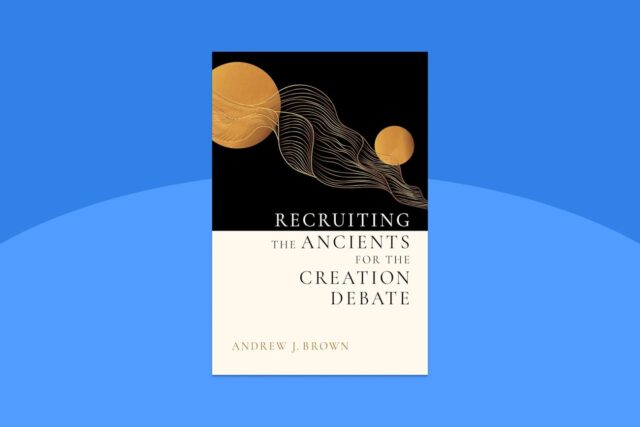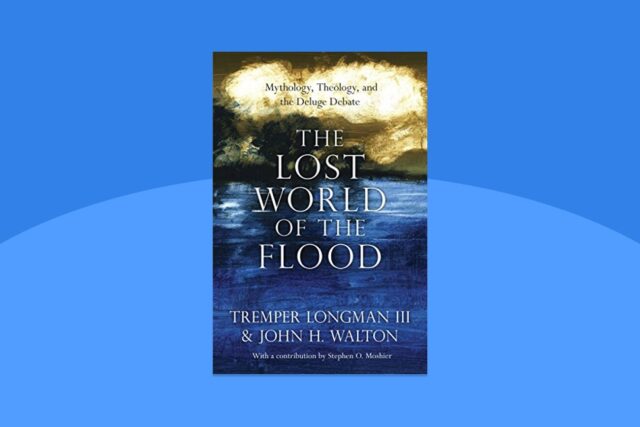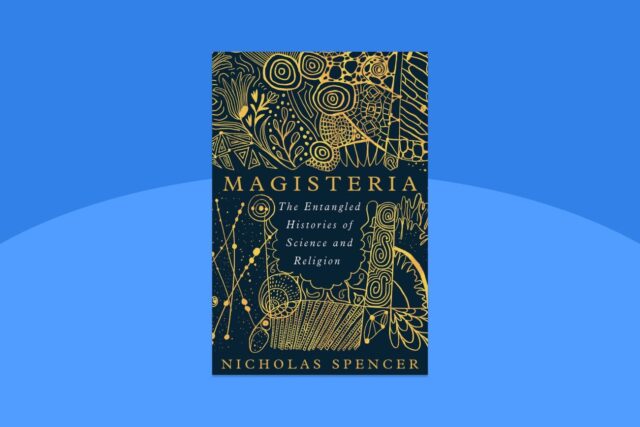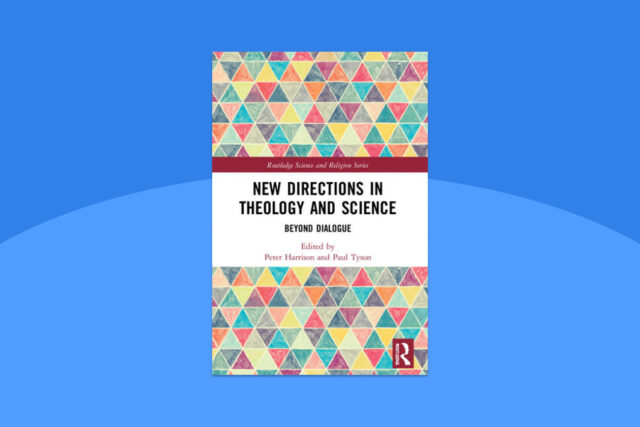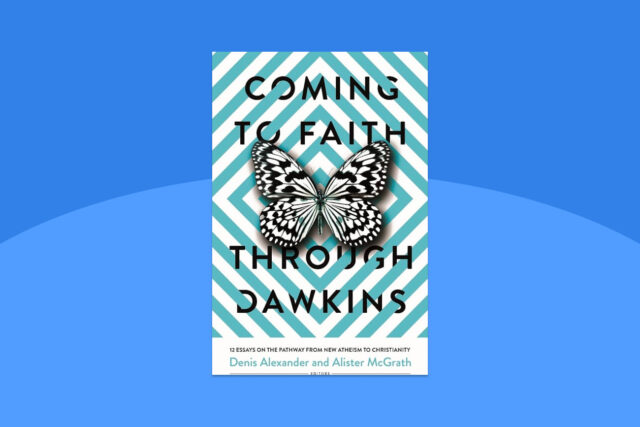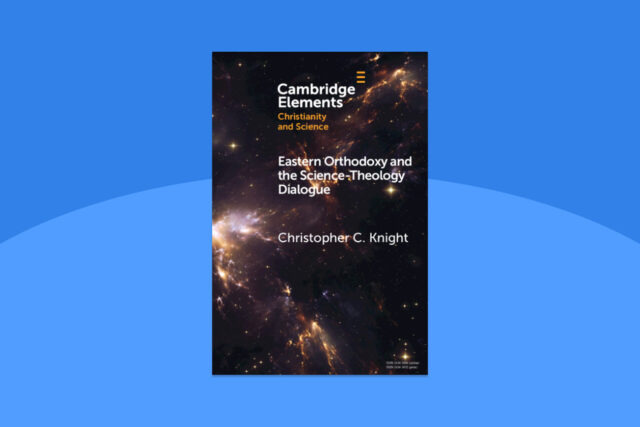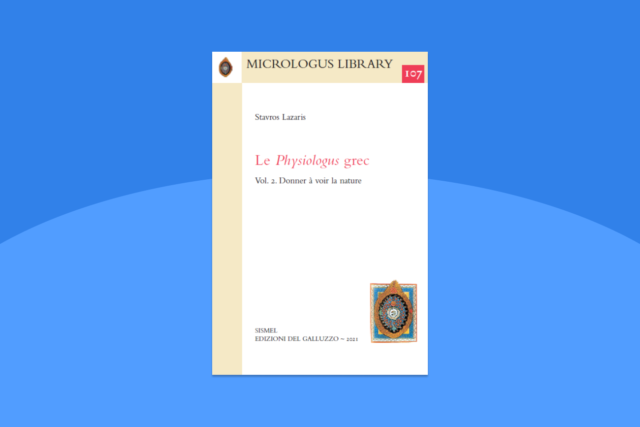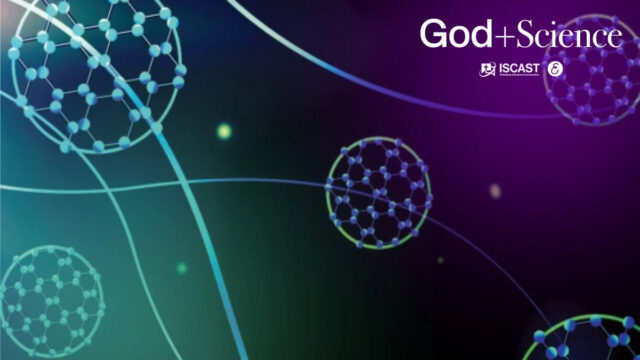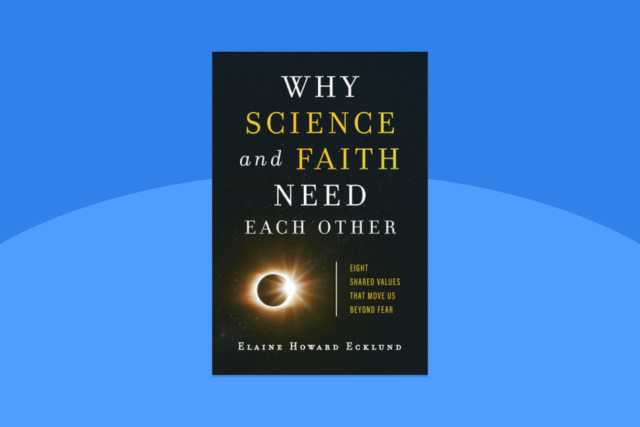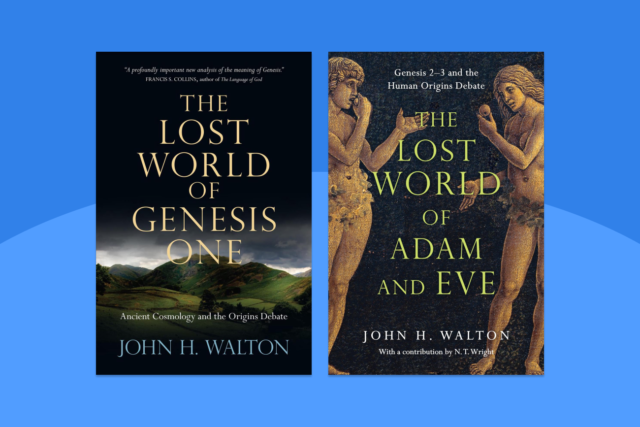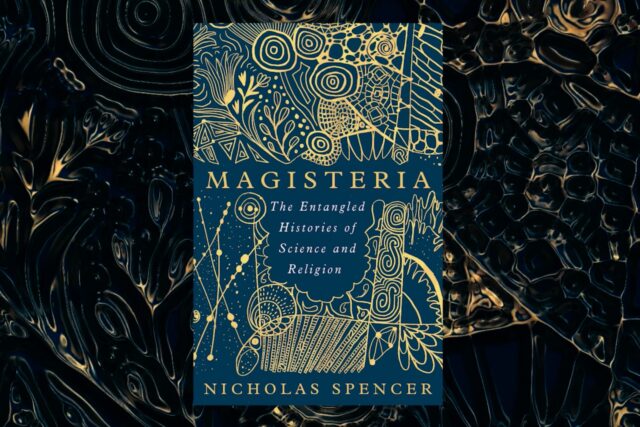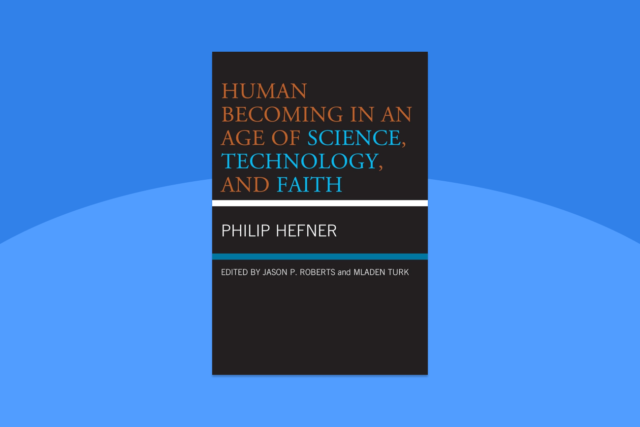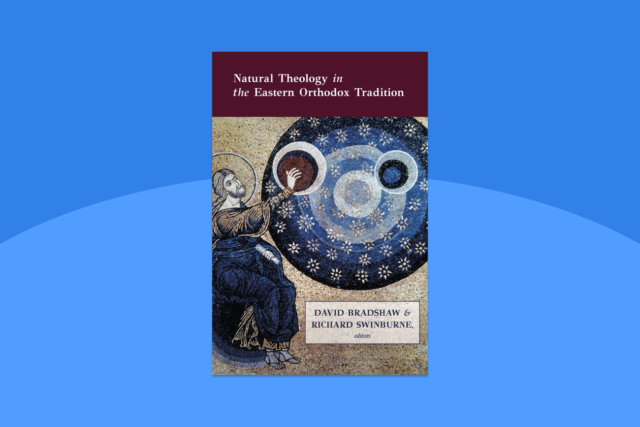
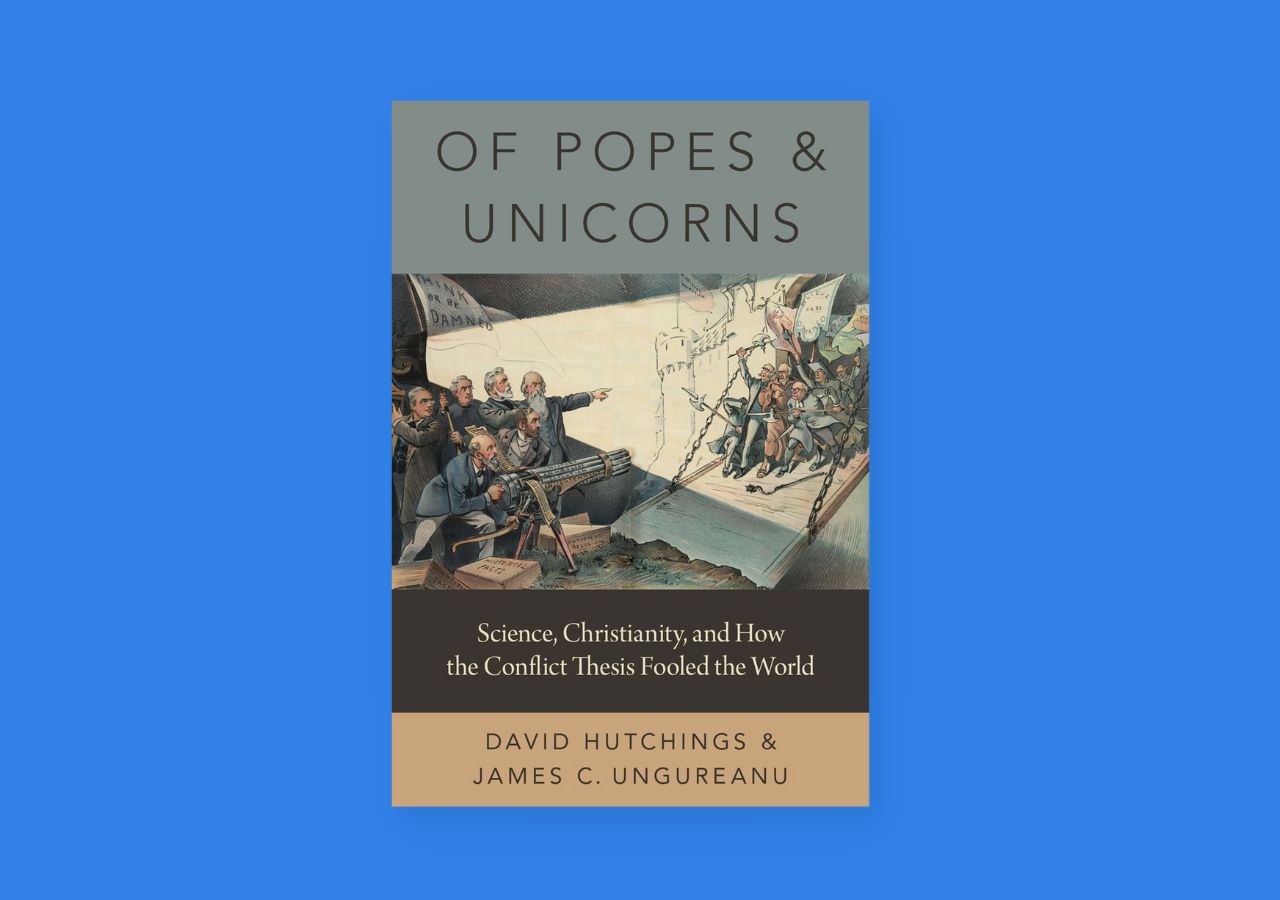
How did the story of the “conflict thesis”—the notion that there exists some fundamental and irrevocable conflict or warfare between science and religion—really come about? Of Popes and Unicorns by David Hutchings and ISCAST Fellow James C. Ungureanu investigates the roots of this myth in an engaging and easy-to-read book.
Book review by Chris McNeill, February 2023.
Of Popes and Unicorns: Science, Christianity, and How the Conflict Thesis Fooled the World
By David Hutchings and James C. Ungureanu
New York, NY: Oxford University Press, 2022
ISBN-13: 9780190053093, 280 pages, first edition, hardback
AUD$62
David Hutchings and ISCAST fellow James C. Ungureanu have teamed up to write this excellent and accessible book debunking the conflict thesis between science and Christianity that emerged in the 19th century and has been propagated ever since (“the lie that will not die”). Hutchings is a physics teacher in the UK and has written other popular science/religion books including Let There Be Science (2017) with Tom McLeish, and God, Stephen Hawking and the Multiverse (2020) with David Wilkinson. Ungureanu is a historian of science and religion and a former PhD student of Peter Harrison at the University of Queensland, and he describes himself as an “intellectual historian.” The combination of Hutchings’ engaging ability to write to a general audience and Ungureanu’s academic background work well to provide a well-researched book that is easy to read.
Layout and Intended Audience
The book is intended for a general audience and would be understandable to senior high school students and the general populace with an interest in science. Indeed, the goal of the book is to communicate to as broad an audience as possible exactly what went on that led to the almost “self-evident” notion that science and Christianity have always been in conflict. The book is certainly engaging and provides reference to more weighty academic treatises for those looking to go deeper.
The goal of the book is to communicate to as broad an audience as possible exactly what went on that led to the almost “self-evident” notion that science and Christianity have always been in conflict.
The book is divided into nine chapters with each chapter being broken into smaller headed sections that are a few pages long, making the book easy to dip into. Ten pages of illustrations are also provided. The authors use engaging stories and analogies to introduce concepts and ideas, while also providing relevant quotes and a full list of notes to back up their arguments and allow interested readers to explore deeper. The result is a convincing popularising of the modern scholarship that has debunked the conflict thesis but is not well-known by the general population.
Two Nineteenth-Century Books in Focus
The notion that Christianity throughout the last two centuries has impeded science at every turn continues to live on in the collective consciousness despite being disproven by academic historians of science, both secular and Christian. Just think of the accepted “fact” that Galileo was imprisoned by the Church for doing science and disagreeing with the accepted dogma at the time.
Hutchings and Ungureanu focus on two influential books published in the nineteenth century, History of the Conflict between Religion and Science by John William Draper (1874) and the two-volume A History of the Warfare of Science with Theology in Christendom by Andrew Dickson White (1896). Although both books would not be widely read today, and are not taken seriously by modern historians, they had a substantial influence at the time, helping to entrench the conflict thesis in modern thought. Indeed, these two books are still, it seems, being used by secular scientists such as the New Atheists looking for source material to defend the conflict thesis. Hutchings and Ungureanu provide the historical context and background to the two books and their authors, and then proceed to investigate the claims and substance of the two books. By contrasting the claims in these books with modern scholarship, Hutchings and Ungureanu show how Draper’s and White’s presentation of damning evidence for the crimes of Christianity against science does not stand up to further investigation. Ironically, Draper and White were both Christians and hoped to reconcile science and Christianity, but had their own agenda and scores to settle. Hutchings and Ungureanu also explore the personal stories and motivations of Draper and White in a sympathetic way, helping to understand how and why the conflict thesis emerged.
Conclusion
This book is highly recommended reading for senior high school students to counter the popular conflict narrative and encourage them to dig deeper. The book is also highly recommended to the general populace with an interest in science and/or history. For more academic readers, there is much to be gleaned from the book; although for some, the anecdotes, stories, and analogies employed to engage the more general reader may come across as unnecessary and cumbersome. Such readers may prefer the authors to get more quickly to the point. However, as mentioned above, the book does provide reference to more academic texts, providing a starting point for academics with more of a scientific background to engage with scholarship on the history of science and religion.
